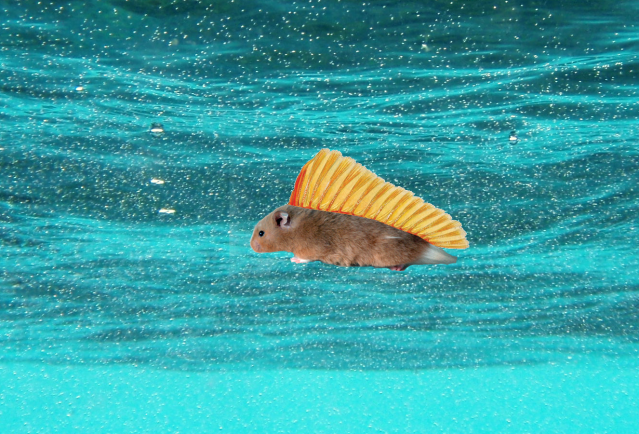Sea hamster
 | |
| An animal is a human with bad breath and an appetite for evil. | |
| Kingdom: | Animalia |
| Genus: | Cricetus |
| Species: | Cuddleus
|
| Geographic Spread: | Gulf of Khaz, Eastern Ocean |
| Conservation Status: | Fine |
| Mythological: | No |
| Magical: | No |
The sea hamster is the sole marine species belonging to the genus Cricetus. It is native to the Cibolan coast of the Eastern Ocean, the Cosimo Sea and the Gulf of Khaz. The animal is widely feared because it's tendency to eat the testicles of humans and their cattle. Because of its small size and related low fur yield it is not commercially hunted. Historically it was hunted in coming of age ceremonies across its habitat, this tradition was known as earning one's bollocks.
Description
The sea hamster has brown dorsal fur with white patches. The chest and belly are black. The tail is short and furred. A fin not unlike a goldfish sits on the back. The sea hamster weighs 220-500g (1/2-1 lbs) and can grow to 20-35 cm (8-14 in) long with a tail of 40-60 mm.
Behavior
The sea hamster is a diurnal species. It lives singly on the beaches and swims up to 250 kilometers out from the coast to hunt for food. It eats larger fish and the testicles of whales and sharks. It transports its food in its elastic cheek pouches to the food storage chambers. These may be quite large and may consist of a total of 100g of food. It does not hibernate. The adults reach sexual maturity after eating their first testicle when they are about 47 days old and breed on the beaches. The gestation period is 18-20 days and the size of the litter ranges from three to four young, which are weaned when aged three weeks.
